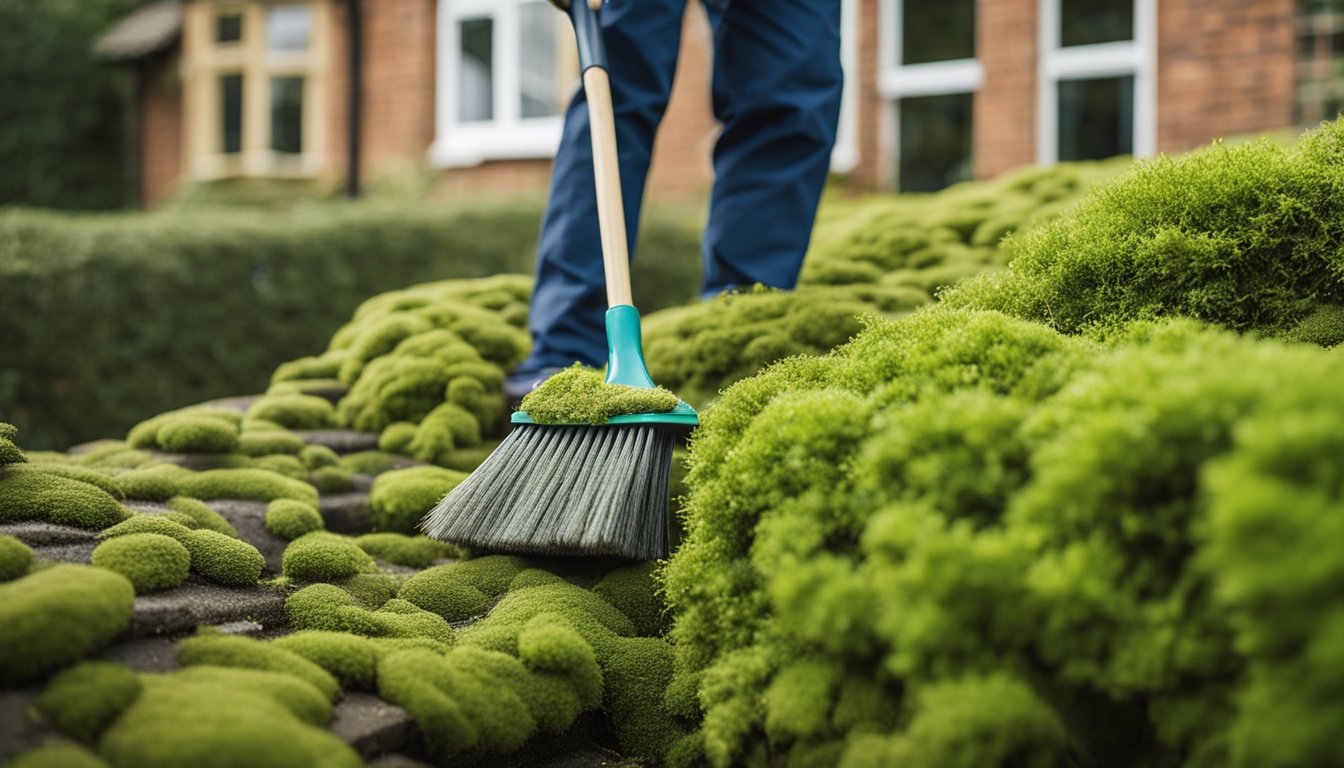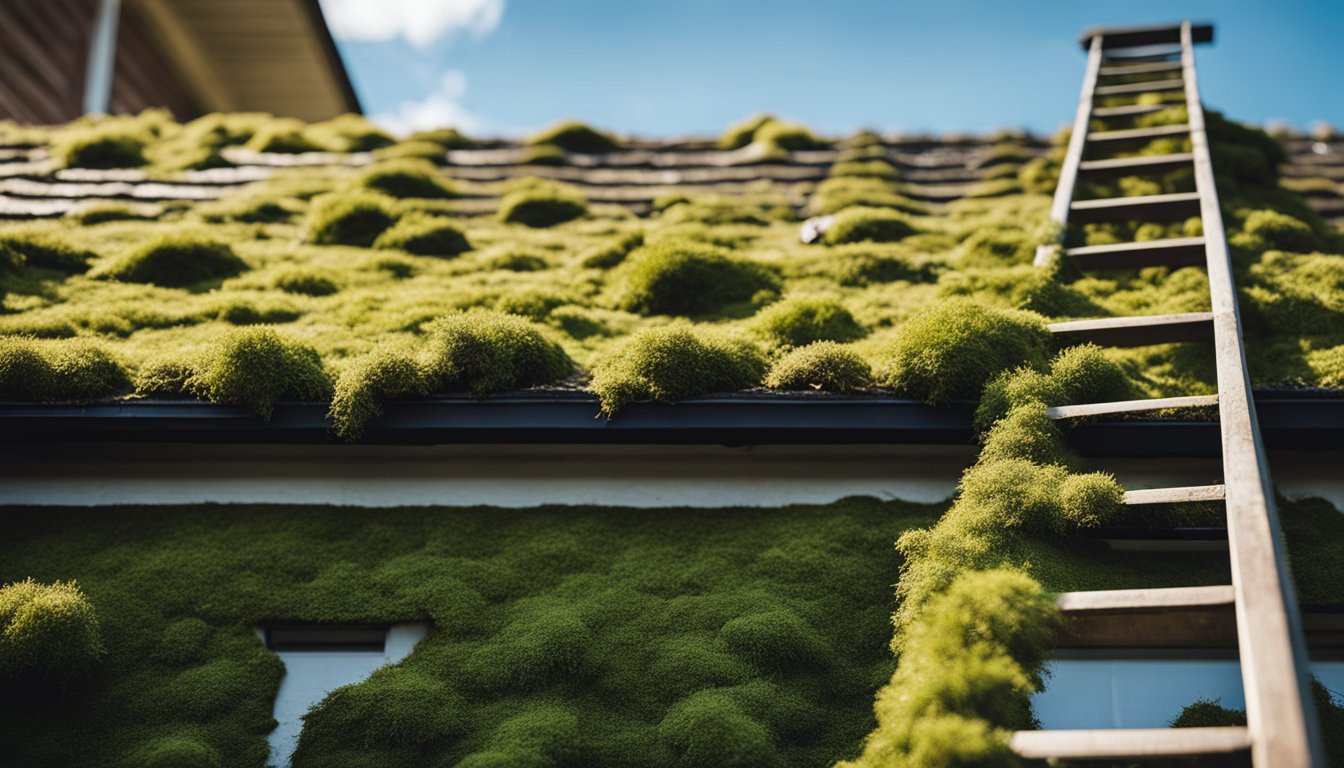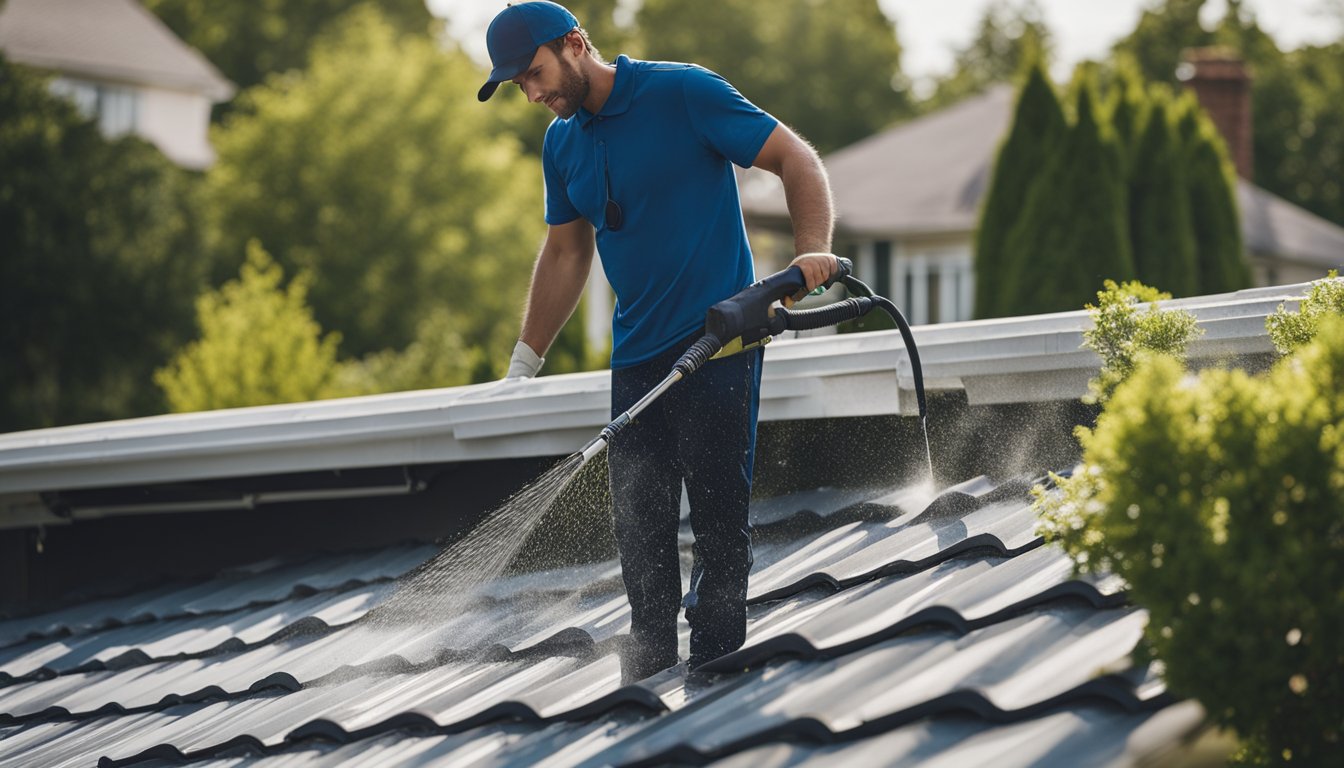Late updated: 10 Jul 2024 09:07
Written by: Oliver Bennett
Roof Cleaning Tips For UK Homeowners: Essential Advice for a Pristine Roof
A clean and well-maintained roof is essential for the health and aesthetic appeal of our homes. Regular roof cleaning not only enhances the curb appeal but also prevents significant damage from moss, algae, and accumulated debris. As UK homeowners, it's vital to conduct periodic inspections and cleaning to ensure our roofs remain in top condition.

Before we begin any cleaning, assessing our roof's condition is crucial. Checking for visible damage, loose shingles, or tiles can help us avoid further problems during the cleaning process. Safety should always be our top priority, and understanding the type of roofing material we have will determine the most effective cleaning methods.
Effective and safe cleaning methods can save us both time and resources. From traditional methods like using a leaf blower to advanced techniques such as gentle pressure washing, knowing the right approach can make a significant difference. We should also consider environmentally friendly solutions to maintain our roofs without causing harm to our surroundings.
Key Takeaways
- Regular roof maintenance and cleaning improve curb appeal.
- Assess the roof's condition before starting any cleaning process.
- Use effective and safe methods tailored to your roofing material.
Assessing Your Roof's Condition

Regularly assessing your roof's condition is crucial for maintaining its longevity and avoiding costly repairs. Key areas to focus on include identifying common issues, conducting frequent inspections, and knowing when to call in professionals.
Identify Common Issues
Several issues often plague roofs, which can lead to long-term damage if not addressed promptly. Moss and algae growth are common problems, particularly in the damp British climate. These can cause dark stains and weaken roofing materials over time.
Damage from weather events, such as strong winds, heavy rain, and hail, can also compromise the integrity of the roof. Look for loose or missing shingles, damaged flashing, and cracked tiles. Leaks are another critical concern, often evidenced by water stains on ceilings and walls inside the home.
Conducting Regular Inspections
Conducting regular roof inspections can help catch problems early before they become significant issues. We recommend a thorough inspection at least twice a year, preferably in spring and autumn.
Start by clearing any debris, such as leaves and branches, which can trap moisture and lead to moss and algae growth. Use a pair of binoculars to check for visible damage, such as cracks or missing shingles. If you notice dark streaks or stains, it may indicate algae or moisture issues. Pay special attention to areas around chimneys, vents, and skylights, as these are common spots for leaks.
Knowing When Professional Help is Needed
While regular inspections can be done by homeowners, some situations call for professional expertise. If you spot significant damage, such as large patches of missing shingles, extensive moss or algae growth, or persistent leaks, it's time to consult a roofing professional.
We should also consider professional help if you're uncomfortable with heights or unsure about the condition of your roof. Roofing professionals have the tools and experience to perform more comprehensive inspections and repairs, ensuring your roof remains in top condition. Employing regular professional services can extend the roof's life and maintain its overall health.
Effective Cleaning Methods and Techniques
Cleaning your roof safely and effectively can ensure its longevity and appearance. It's crucial to choose the right methods, suitable cleaning solutions, and follow safety precautions to avoid damage.
Choosing Appropriate Cleaning Solutions
Selecting the right cleaning solution for your roof is essential. For roofs with significant moss or lichen growth, a solution containing bleach can be effective in killing these organisms.
However, it’s critical to choose a solution that is environmentally friendly and safe for the surrounding landscape. Always read labels to ensure compatibility with your roof’s material. Additionally, consider alternative solutions like vinegar or specific roof-cleaning products designed to minimise harm to plants and gutters.
The Soft Wash Method Explained
Soft washing is a gentle technique ideal for delicate roofing materials. It uses low-pressure water combined with specialised cleaning solutions to remove dirt, moss, and algae without causing damage.
This method ensures that the structural integrity of the roof is maintained while still effectively cleaning it. Ensuring you use the correct mixture is important – usually a mix of water and biodegradable chemicals. Professional roof cleaning services often recommend soft washing for its effectiveness and safety.
Pressure Washing vs. Soft Washing
When comparing pressure washing and soft washing, it’s important to understand the differences. Pressure washing uses high-pressure water to remove grime, which is effective but can also damage roofing materials like shingles or tiles.
Soft washing, on the other hand, uses low-pressure water with cleaning solutions, making it safer for more fragile surfaces. While pressure washing is quicker, soft washing ensures long-term protection of the roof's surface.
Ensuring Safety During Roof Cleaning
Safety during roof cleaning cannot be overstated. Always wear the necessary safety gear, including rubber-soled shoes, a helmet, and harness if needed. Check weather conditions and avoid cleaning on windy or rainy days to prevent accidents.
Ensure the ladder is secure and have someone assist you if possible. Additionally, inspect the roof for any damages or weak spots before starting, as these can pose risks during cleaning. Using professional services can mitigate these risks, but if you’re opting for DIY roof cleaning, prioritise safety above all else.
Frequently Asked Questions

In this section, we'll explore some of the most common queries UK homeowners have regarding roof cleaning, addressing key aspects such as safety, methods, and frequency.
How can one safely perform DIY roof cleaning in the UK?
DIY roof cleaning can be managed safely with proper precautions. Always use a sturdy ladder and ensure it's securely positioned. Wear non-slip footwear and consider using safety harnesses. Avoid working on wet or slippery roofs. It’s advisable to work with a partner for added safety.
Is it advisable to pressure wash roofs in the UK, and what are the alternatives?
Pressure washing is a popular roof cleaning method but it may damage tiles if not done correctly. It’s crucial to use a low-pressure setting. Alternatives include soft washing, which involves a chemical solution to clean the roof without high pressure, and manual scrubbing.
What techniques are most effective for removing moss from UK roofs?
Moss can be stubborn but can effectively be removed by gentle scraping with a long-handled brush. Chemical treatments specifically designed for moss removal can also be applied. Copper or zinc strips installed at the roof ridge can prevent future moss growth by releasing ions that inhibit moss formation.
What considerations should UK homeowners keep in mind when choosing a roof cleaning method?
When selecting a roof cleaning method, factors such as roof material, age, and condition should be considered. Certain methods may not be suitable for older or more delicate roofs. Environmental considerations, like the effect of cleaning solutions on nearby plants, should also be taken into account.
How often should UK homeowners undertake roof cleaning to maintain their property?
Regular roof cleaning is essential to prolong the lifespan of the roof and maintain property value. Generally, it’s recommended to clean the roof every 1-3 years, depending on the surrounding environment and weather conditions, which might necessitate more frequent cleaning.
What precautions should be taken when cleaning metal roofs in a UK home?
Metal roofs require specific precautions to avoid damage and ensure effective cleaning. Use non-abrasive tools and mild cleaning solutions to prevent scratches and corrosion. Always rinse thoroughly to remove any cleaning agents. Regularly check for and address any signs of rust or wear.
Make sure the surface is completely dry before stepping onto it to prevent slips and falls.
